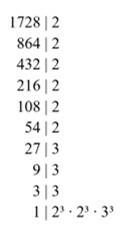In the 20th century, guerrilla warfare was widespread in Latin America. The main groups of Latin American guerrillas emerged in Colombia, Venezuela, Peru, Guatemala, Argentina, Brazil, Nicaragua, among others.
However, only two guerrilla wars were successful on the American continent, that is, they conquered power. The first was in Cuba, in 1959, in the so-called Cuban Revolution, with the leaders Fidel Castro and the martyr Ernesto Che Guevara (Che's image was configured as an ideal-typical representation of the guerrilla). The second guerrilla movement that boasted the seizure of power in Latin America took place in Nicaragua, in 1979, through the Sandinista National Liberation Front. The main leaders were Augusto Sandino, founder of the Nicaraguan guerrilla in the 1920s; and Daniel Ortega, who took power in 1979.
The main actions of the guerrillas consisted of the realization of focusism (or the so-called outbreaks), which based on the existence of objective conditions, in which revolutionary practice could be placed in action. The practice of guerrilla warfare consisted of fighting in revolutionary outbreaks based on armed struggle, that is, for the guerrillas or guerrillas to armed struggle was the only way found to fight the dictatorial regimes present in several Latin American countries and to conquer the power.
In several Latin American countries, guerrillas of different political-ideological conceptions, such as nationalists, Marxists, Guevarists, among others, used the fight armed to fight the dictatorships installed in different Latin American countries, as in the cases of the guerrilla group Sendero Luminoso, active in the 1970s and 1980s, in the Peru; and the FARC (Revolutionary Armed Forces of Colombia), active to this day.
In Brazil, the focus guerrilla also existed and was put into practice by the Brazilian guerrillas in 1968, in the well-known Guerrilha do Araguaia, where revolutionary guerrillas adopted armed struggle as the main way to overthrow the military dictatorship that had been installed in Brazil in the year of 1964. The guerrilla focus in Brazil was concentrated near the Araguaia river, in the city of Xambioá, which at that time belonged to the state of Goiás (today integrates the state of Tocantins), and on the border of the current states of Pará and Maranhão.
In the late 1960s and early 1970s, the Guerrilha do Araguaia was heavily fought by the Brazilian army. Under the scrutiny of the then military president, Garrastazu Médici, several guerrillas were killed and tortured by the Brazilian military. Until today, several bodies of guerrillas who fought in the Guerrilha do Araguaia have not been found.
Therefore, guerrilla attempts in Latin America were unsuccessful, with the exception of Cuba and Nicaragua (as mentioned above), for several factors: the first would be the fact that the guerrillas were organized in isolated and remote locations, as in the case of the Guerrilla do Araguaia. The second factor was the preponderance of the military question over the political question; and the third factor that decreed the bankruptcy of the guerrillas was the little importance given to the historical particularities of each region/country. Thus, the guerrillas in Latin America declared bankruptcy.
Leandro Carvalho
Master in History
Source: Brazil School - https://brasilescola.uol.com.br/historia-da-america/guerrilhas-na-america-latina.htm

